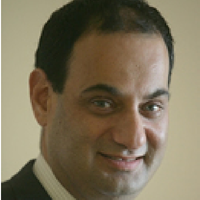The overlooked assets in the search for yield

 Every time an article appears in the media talking of another cut in interest rates, retirees’ hearts must pump that little bit faster.
Every time an article appears in the media talking of another cut in interest rates, retirees’ hearts must pump that little bit faster.
For the reality is that for many of these retirees, the cut in interest rates is an effective cut in their income – a fact usually ignored in a country obsessed with home ownership, and where falling interest rates are typically portrayed as positive.
Today, with interest rates around 2.5 per cent on term deposits, it is easy to do the maths: for a retiree wanting the nearest thing to risk-free investing, they will need $2 million to get an annual income of $50,000 (if they want to maintain their capital).
And in the short term at least, this situation is not about to change. Throughout the developed world, interest rates are at record lows and this is seven years after the Global Financial Crisis. No doubt interest rates will rise again, but no one should be holding their breath.
So for the many retirees who don’t boast a lump sum in excess of $2 million, it means they have three options. They can either be content with a lower standard of living; they can sell some assets; or they can be prepared to invest in riskier assets that deliver a higher yield.
As myriad research reports into SMSF trustee investment behaviour shows, most do not have the investment wherewithal to make decisions involving riskier asset classes. As we know, their portfolios are typically invested in Australian blue-chip shares (particularly of the fully franked variety), cash and fixed deposits and, increasingly, property.
But to ensure an income stream that will give them the standard of living they expect in retirement, these retirees are going to have to become savvier about investment options.
As stated above, fully franked shares have been a good option for those investors looking for yield. With the banks boasting an average yield of over 5 per cent based on their current share prices, this is still an attractive option.
But some investors are looking for higher returns and have been looking at hybrid securities to achieve this goal. A strong note of warning here: hybrids do deliver a higher return, but they come with definite risks – even if issued by institutions such as our major banks. For example, many people are not aware that the issuer of a hybrid does not have to redeem it when it expires, but can simply roll it over. The higher yield definitely comes with a higher risk.
In my opinion, many of these retirees would be well advised to find specialist financial advisers who understand investment markets outside Australia. For example, higher yields can be found in emerging bond markets, but they are not for the uninitiated.
The same logic can be applied to overseas equity markets, where capital returns, logically enough, have been strong in such a low-interest rate environment.
Property, too, has been attracting interest, especially among SMSF trustees and especially at the residential end of the market. But as we know, the surge in property prices (especially Sydney) is making this a poor investment option in terms of yield, to say nothing of losing the positive effects of negative gearing if one is in retirement and unable to access this tax break.
To my mind there are two asset classes that have been overlooked, one out of lack of knowledge and the other out of lack of opportunity.
Unlisted commercial and industrial property offers attractive yields (averaging around 7-8 per cent) in asset classes that are not risk-free, but are certainly less volatile than equities. The issue here is that the investor has to be prepared to lock up their money for a set period, but for retirees looking for income, this should not be too big a price to pay.
There are reputable property companies on the market that your adviser can tell you about, so it is certainly an option worth pursuing.
The other asset class that unfortunately is difficult for retail investors to tap is infrastructure. This is a great tragedy, as it offers all the investment attributes that retirees, in particular, crave: low volatility, solid returns linked to inflation and long-term investment horizons.
If I can be slightly political: all political parties should address this issue, especially as Australia is crying out for infrastructure investment. I am quite sure that, given the opportunity, many SMSF trustees would be attracted to this asset class.
No doubt the low-interest environment has derailed quite a few retirees’ investment plans, understandable when you consider interest rates are at historic lows.
But there are options: you just have to be prepared to get specialist advice about what they are. Certainly, waiting for interest rates to spike in the near future is not a strategy.

George Lucas is managing director of Instreet Investment Limited. He has more than 24 years' experience in the investment banking and funds management industries, specialising in developing, managing and structuring financial products. He was previously a director of two listed investment trusts, chief investment officer at Mariner Financial and a senior equities derivatives trader with Citibank and First Chicago in London.
Subscribe to 
Never miss the stories that impact the industry.






